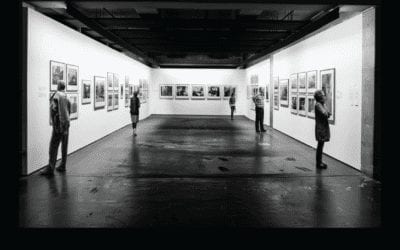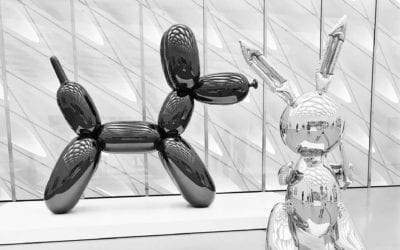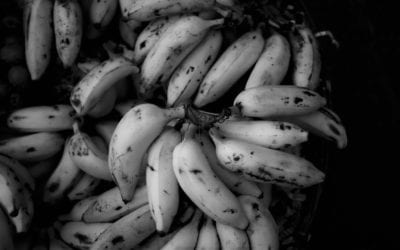Why No One Understands Abstract Art
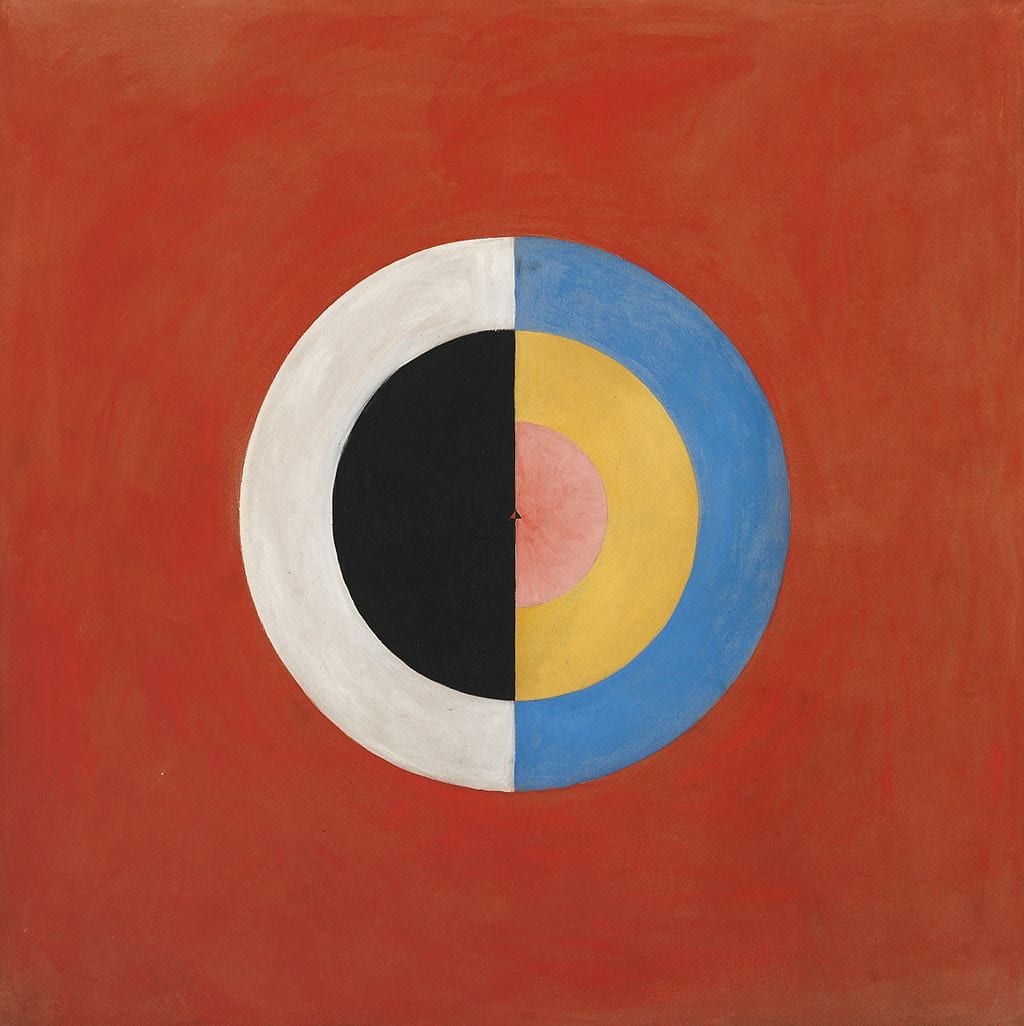
Svanen (The Swan) No. 17 by Hilma Af Klint – Licensing (PD-old-75)
Lost In the Abstract
The wilderness of abstract art is strange. Its colorful branches are incredibly unique yet strikingly similar – leaving us lost in the abstract. But with a touch of guidance and intuition, we can find our way through abstract art and see all it has to offer. Soon, we’ll discover it has infinite variety and bottomless depth. It can mesmerize us with beauty or become a window to the soul.
But to see where we’re going, we must know where we’ve been. And while abstract art looks like someone asked, “How many ways can we paint blobs, lines, and colors on a canvas?” – its origins are far more divine.
“Before the soul can see, the harmony within must be attained, and fleshly eyes be rendered blind to all illusion.” – Helena Blavatsky
First Came the Spirit
In 1875, Russia’s Helena Blavatsky created Theosophy – a spiritual movement to push society away from conventional knowledge and closer to divine wisdom.
Theosophy exploded around the world – inspiring the father of abstraction, Wassily Kandinsky. At a time when the art world demanded artists portray reality, Kandinsky sought a higher purpose. He believed color, line, and form had an “inner sound” that could move the spirit – like notes of music. Reality was simply a distraction – covering the ears of the soul.
The notion that art should do more than describe our surroundings caused a chain reaction. Soon came Der Blaue Reiter, Op Art, Suprematism, Orphism, De Stijl, Constructivism, Tachisme, Minimalism, Color Field, and Action Painting to name a few.
With deep origins and countless movements, it’s no wonder we struggle to understand it all. However, there’s a simple way to navigate it.
Follow the Big Three
We don’t need to study history and philosophy to appreciate abstract art. To guide us through the forest of colorful canvases, we can place them in three categories.
Stimulators
Purpose – Stimulators are powerful compositions. They grab us, won’t let go, and have a similar effect as the musical paintings of Kandinsky. They engage us, make us feel alive, and can be admired year after year.
Style – Stimulators are often complex, using different colors, forms, brush strokes, and textures to keep us engaged. They show a mastery of design principles such as contrast, structure, tension, rhythm, and balance. Stimulators can be improvised or planned. Improvised stimulators are jazz bands, with the artist freestyling their brushstrokes – only stopping when it feels complete. Planned stimulators are orchestras, with the elements prearranged to create a powerful composition.
Example – La Fenêtre (The Window). Robert Delaunay, the co-founder of Orphism, believed art should be beautiful and had musical qualities, like Kandinsky. Delaunay’s unique approach used captivating geometric patterns and color as primary tools. He combined the two with his study of color theory and invented the term “simultanism” – the phenomenon that a color’s appearance is altered by the other colors surrounding it. In 1912, Delaunay created La Fenêtre as a part of his Simultaneous Windows Series. Inspired by a mere postcard of the Eiffel Tower, it is one of his earliest works depicting his transition to complete abstraction.
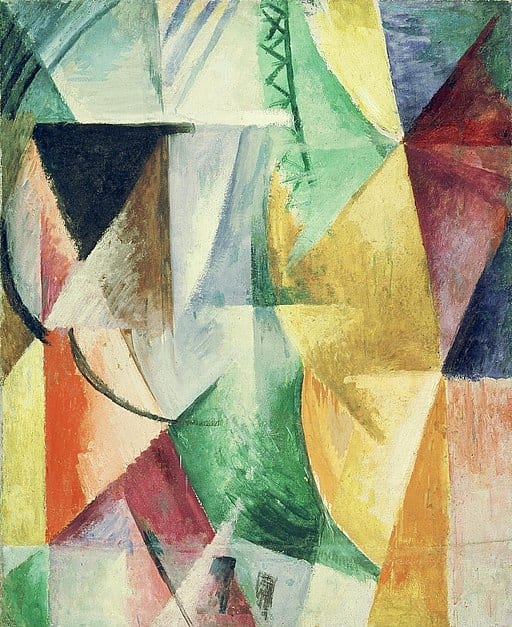
La Fenêtre by Robert Delaunay – Licensing (PD-old-auto-expired)
Feelers
Purpose – Feelers translate intangible human qualities like emotion and presence into works of art. Staring deeply into them stirs feelings from serenity to aggression. They often distill the many emotions of a person onto a single canvas – serving as a self-portrait of the soul.
Style – Feelers have no common set of visual cues. They range in complexity from wild and bright brushstrokes to one-color canvases. They may be carefully planned or improvised.
Example – Number 28, 1950. One of the largest figures in abstract art is America’s Jackson Pollock. In 1947, Pollock painted his first of many “drip” paintings and fathered Abstract Expressionism. His work was pure expression. Instead of the calm and thoughtful approach used by other artists, Pollock freely flung, dripped, and poured paint onto a huge canvas as it lay on the floor beneath him. His paintings exposed the world to a wild and restless man filled with aggression and inner battles.
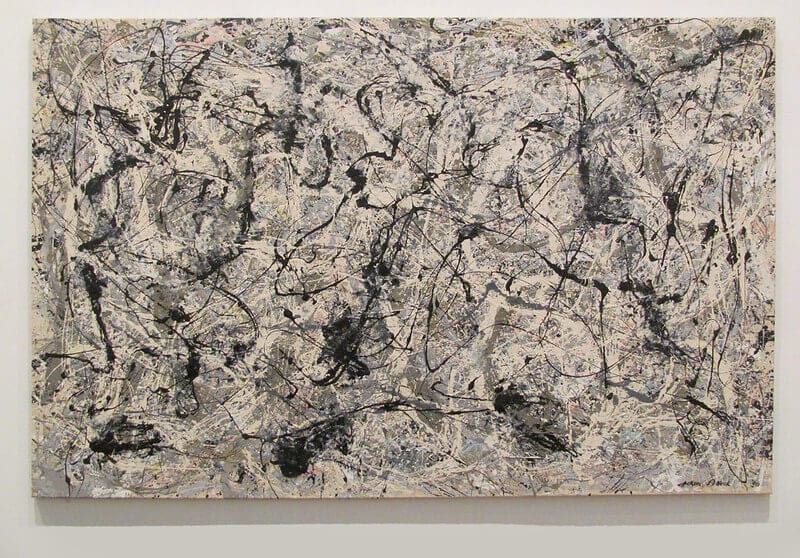
Number 28, 1950 by Jackson Pollock – Image Courtesy of Rocor / CC BY-NC 2.0
Thinkers
Purpose – Thinkers subconsciously push the viewer to ponder ideas outside of the painting itself. They may ask us to think about the yin and yang of the universe or the struggles of humanity.
Style – The common thinker is simple and may not be the most exciting to look at. They are carefully planned with features wisely placed throughout the canvas. Essential elements are methodically added while distracting and non-essential elements are removed – resulting in a meticulously crafted appearance. Thinkers are the hardest to identify without prior knowledge to tip us off to the intended idea.
Example – Composition with Red, Yellow, Black, Blue and Grey 1930. Piet Mondrian created a strict geometric style called De Stijl or “The Style.” Inspired by the tragedies of WWI, Mondrian created grids of white, red, yellow, and blue separated by black lines to reflect universal harmony.
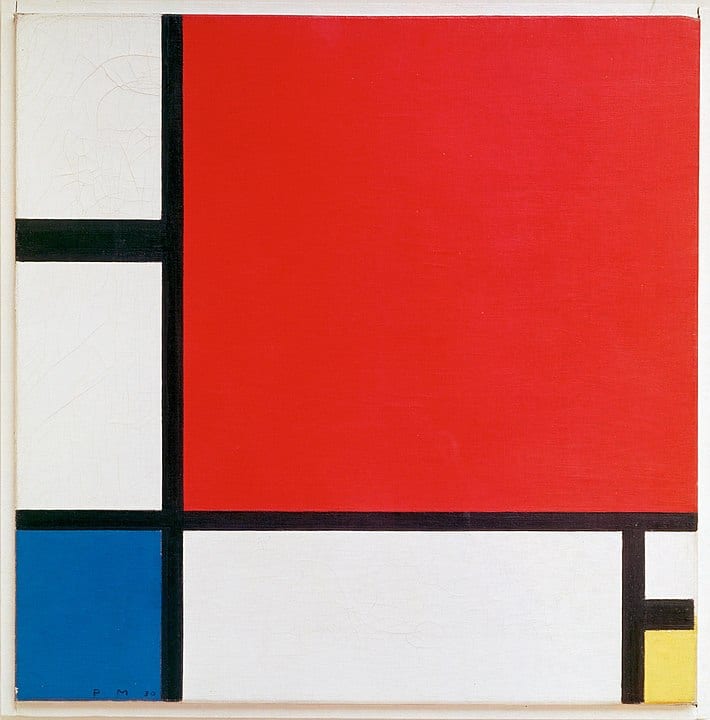
Composition with Red, Yellow, Black, Blue and Grey 1930 by Piet Mondrian – Licensing: PD-old-75-expired
The Fine Print: Art Hates Boxes
Art loves philosophies and loose guidelines but detests strict rules. After all, excessive rules would kill art’s creativity and stunt its growth. This presents a challenge to authors, historians, and bloggers using labels to discuss it. For try as we might, the shoe doesn’t quite fit.
Still, movement titles and categories are invaluable to our understanding. They serve as a compass telling us to journey west and carve our own path – not a GPS, directing each turn. Fortunately, keeping a few things in mind can show us the way.
Pieces fall into more than one category.
Artists and the movements that define them are frequently inspired by one another. Therefore, many pieces fall into multiple categories. For example, stimulators are commonly feelers and occasionally thinkers.
The path is different for everyone.
The way we perceive art is filtered through our personal experiences. Interestingly, this means we can better understand ourselves and others by how they perceive art – much like a psychological inkblot test.
A brightly colored canvas can make a joyful person happy and a depressed person feel nothing at all. An environmentalist may see Maurizio Cattelan’s Comedian as a story of the planets doom. A gender equality activist may see the fall of American patriarchy. All are right.
Feel first. Think second.
In abstract art, visual cues do not define their movement or category. While often complex, stimulators can be simple – exciting us with minimal effort. Likewise, thinkers can be powerful – with designs that captivate our minds. Therefore, common visual cues are mere tips – nudging us on our journey.
This is troubling. We like to “think” our way through art. However, abstract art asks us to silence our thoughts and let the piece guide our senses along the journey. If you feel complex emotions, you may be face-to-face with a feeler. If you drift through the universe, it may be a thinker. Only after feeling will we know the way.
Too Smart to Understand
In Theosophy, students are taught to turn off their logical minds to find divine wisdom. For most of us, that’s nearly impossible. Humans are smart. Too smart for divine wisdom. Too smart for abstract art.
Like a GPS amongst the woods, “thinking” leaves us lost in the vast wilderness of abstract art. Soon we find that categories, movements, and visual cues only point us in the right direction. We must tap into our subconscious to guide us – or remain lost forever.
As I can,
ss
The Psychology of Interpretation
The Psychology of InterpretationSpace Program: Mars by Tom Sachs - Courtesy of Dave Pinter / CC BY-NC-ND 2.0Reliving Our PastAround 1917, psychologist Frederic Bartlett asked a group of participants to read and recite an unusual folk story, The War of the Ghosts...
How We Meet Black America
How We Meet Black AmericaRumors of War by Kehinde Wiley - Courtesy of Brecht Bug / CC BY-NC-ND 2.0Have we met before?In 2020, nearly everyone has an impression of Black America – good, bad, or indifferent. However, 40% of White Americans don’t have a single friend...
Retail vs. Fine Art: Do We Know the Difference?
Retail vs. Fine Art: Do We Know the Difference?Butterfly Knight by Oliver GalSelling vs. CreatingThe greatest separator between retail and fine art is philosophy. Retail art believes in selling. It’s for the newcomer looking for something beautiful. It wants to be...
Jeff Koons Top 5: $245 Million in Art
Jeff Koons Top 5: $245 Million In Art“What I think is really wonderful about childhood is that kids are really open to everything. Children love things for just what they are. Blue is beautiful for blue. Pink is beautiful for pink.” – Jeff Koons5) Popeye -...
Timeless Design: Reviewing Impulses by Dennis Dodson
Timeless Design: Reviewing Impulses by Dennis DodsonWhen a piece calls you, you know it. In 2016, while venturing through a labyrinth of 2,000+ pieces, one called me. Today, Impulses by Dennis Dodson towers over the rest of my collection. It’s intense yet subtle,...
12 Steps to Appreciating Art
12 Steps to Appreciating ArtUntitled No. 11, 1963 by Mark Rothko – Image Courtesy of Flickr / CC BY-NC-ND 2.0The Power of OpinionThe key to balancing subjectivity and judgment is our opinion. Opinions are interesting. They are unique to each of us yet we always have a...
Why A Banana is Worth $120K
Why a Banana is Worth $120KWhat’s special about Comedian?The banana’s name is Comedian. Don’t think of Comedian as a banana. Think about it as a comedian at a Sunday open mic. Every joke is about wealth inequality. And we’re all a part of it. Cattelan knew the...


